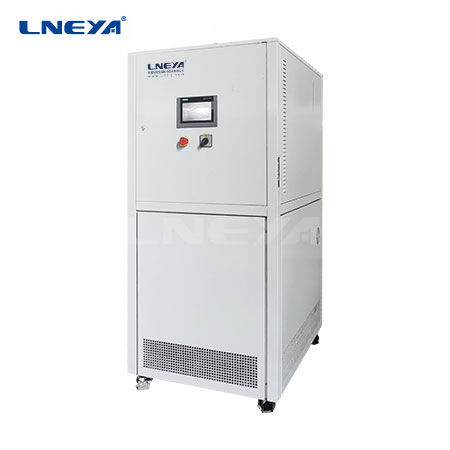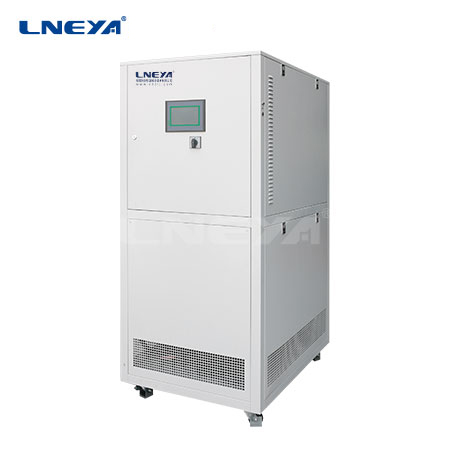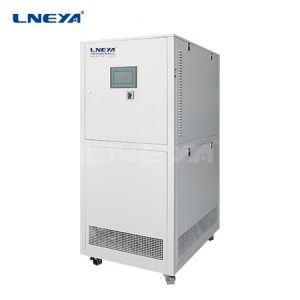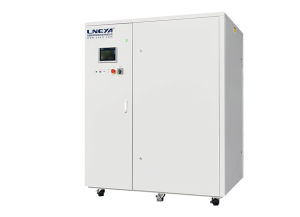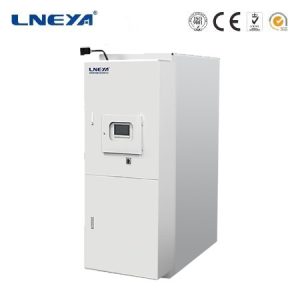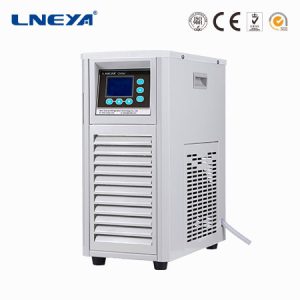Low temperature chiller unit in the production of PGA catalyst auxiliary materials
Low temperature chillers play an important role in the production reaction process of polyglycolic acid (PGA) and its catalysts and additives. The synthesis and post-treatment process of polyglycolic acid often involve exothermic reactions, requiring precise temperature control to maintain stable reaction conditions, ensure product quality, and improve production efficiency.
The following are the specific applications of low-temperature circulating chillers in this process:
Temperature Control: In the synthesis process of PGA, especially through the condensation reaction of methyl glycolate (MG), a large amount of reaction heat will be generated. The low-temperature chiller unit effectively removes excess heat generated during the reaction process by providing refrigerant to the reaction system, maintaining the temperature inside the reaction vessel within a constant and suitable range. This is crucial for controlling the polymerization rate, molecular weight distribution, and product characteristics.
Catalyst Efficiency: Some PGA synthesis routes may involve the use of catalysts, and the activity and selectivity of catalysts are very sensitive to temperature. The chiller unit can optimize the working conditions of the catalyst, improve catalytic efficiency and product yield through precise temperature control.
Post treatment and Refining: In the post-processing stage of PGA, such as devolatilization, crystallization, or dissolution, precise temperature control is also required. The chiller unit can help achieve rapid cooling, promote product crystallization or stabilize the solution state, and improve separation and purification efficiency.
Safety and Stability: When handling flammable or potentially hazardous materials, the chiller unit can also avoid safety risks caused by overheating through effective temperature management, ensuring the safety and stability of the production process.
Energy Efficiency: Modern chiller designs focus on energy efficiency, reducing energy consumption through efficient heat exchange and intelligent control strategies, meeting the needs of sustainable development and cost control.
Low temperature chillers are indispensable equipment in the production process of polyglycolic acid and its related catalysts and additives. They play a key role in maintaining temperature control accuracy, improving product quality, ensuring production safety, and enhancing energy efficiency.
Low Temp Chillers
- MORE
LT -45℃~30℃
LOW TEMPERATURE COOLING CIRCULATOR For fast liquid cooling 1. Can use ethylene glycol mixed with water for circulating refrigeration, saving resources 2.Circulating pipeline design, prolong t…
- MORE
LT 10℃~30℃
Saving water resources & circulating cooling 1. Can use ethylene glycol mixed with water for circulating refrigeration, saving resources 2.Circulating pipeline design, prolong the use time of circulating …
- MORE
LT -25℃~30℃
Rapid refrigeration using imported brand semi-enclosed piston compressor, semi-enclosed piston two-stage compressor, semi-enclosed screw compressor 1. Can use ethylene glycol mixed …
loading…
已经是到最后一篇内容了!
Related recommendations
-
LT -25℃~30℃
3392Rapid refrigeration using imported brand semi-enclosed piston compressor, semi-enclosed piston two-stage compressor, semi-enclosed screw compressor 1. Can use ethylene glycol mixed ...
View details -
LTZ Series- with Heating Function
122APPLICATIONS LTZ variable frequency belt heating function series, temperature control range: -40℃~+90℃, temperature control accuracy: ±0.3℃. The variable frequency unit adopts advanced variable frequency technology to accurately contro...
View details -
Liquid Cooling Chiller(Charging Pile)
3198Model CHDYL-4 -45℃~55℃ Cooling Power 4KW Temp control accuracy ±1℃ Real-time temperature record Refrigerant Brine circulation system fully enclosed design Flow 1.8~5.5L/min Pressure 0.7bar Minimum water inlet temperature 15°C (...
View details -
LT-800 mini chiller
8058LNEYA mini chiller is a small water chiller use in laboratory for rotary evaporator.
View details
 LNEYA Industrial Chillers Manufacturer Supplier
LNEYA Industrial Chillers Manufacturer Supplier









